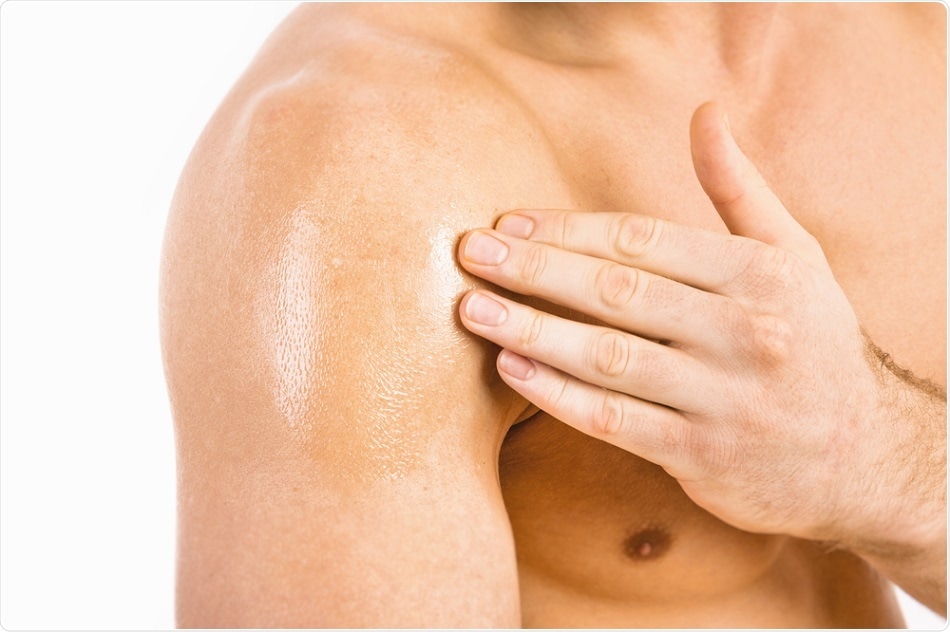Researchers at the University of Southern California (USC) have managed to grow human, testosterone-producing cells in the laboratory, a development that could lead to improved treatment of low testosterone levels (hypogonadism).
 Marc Bruxelle | Shutterstock
Marc Bruxelle | Shutterstock
The new approach could lead to a way of treating the condition with personalized treatment cells rather than hormonal therapy, which is associated with side effects, including an increased risk for other diseases.
Hypogonadism affects millions of men
Testosterone levels slowly decreases with age, but can also fall suddenly as a result of illnesses such as mumps or as a result of cancer therapy during childhood. The condition, which affects millions of men, can have a negative impact on mood, sex life and health. As well as affecting fertility, sexual function and libido, the condition is associated with an increased risk for obesity, problems with bone health, cardiovascular disease and the metabolic syndrome.
Testosterone replacement therapy, which may be injected, taken orally or applied topically, can reverse many of the symptoms and risks associated with the condition.
"You feel better, you lose weight, erectile function returns," says lead researcher Vassilios Papadopoulos. "Men love testosterone."
Disadvantages of the hormonal therapy
However, this testosterone replacement therapy is also associated with side effects, including infertility and an increased risk of prostate cancer and cardiovascular disease. Furthermore, the topical treatment can rub off on close contact and expose them to the drug.
Now, the USC researchers think they may have found a new solution. They think transplantation with lab-grown testosterone-producing cells, perhaps administered by injection into fatty tissue, could bypass the side effects.
“There is a need to obtain T-producing cells that could be used to treat hypogonadism via transplantation and reestablishment of T-producing cell lineages in the body.
USC Researchers
“A way to generate possible transplantation materials for clinical therapies”
In the current study, the researchers describe how they have successfully transformed human-induced pluripotent stem cells, which come from human skin or blood, into functioning Leydig cells—the cells in the testes that produce testosterone.
"Our study provides a way to generate possible transplantation materials for clinical therapies, as well as a path toward testing and developing new drugs.
Vassilios Papadopoulos
Previous attempts have been made to cultivate Leydig cells from stem cells, but the studies have come up short. Papadopoulos says that in one study, the induced Leydig cells produced cortisol rather than testosterone. Other research has used mesenchymal stem cells taken from bone marrow or the umbilical cord, but harvesting these stem cells is much more labor-intensive and the cells do not proliferate as well in the lab.
“Alternatively, human induced pluripotent stem cells (hiPSCs), which are expandable in culture and have the potential to differentiate into all somatic cell types, have become the emerging source of autologous cell therapies,” writes the team.
The human collagen was the secret sauce
For the experiment, the researchers used chemically defined culture conditions and added factors needed to transform stem cells into Leydig cells, including human collagen. Collagen is an important growth matrix ingredient. Previously, the team had used bovine or rat collagen in their experiments, but this time they used human collagen.
As reported in the Proceedings from the National Academy of Sciences, the human Leydig-like cells (hLLCs) produced testosterone and looked the same as their naturally occurring counterparts once examined under the microscope.
“hLLCs expressed all steroidogenic genes and proteins important for T biosynthesis, synthesized T rather than cortisol, secreted steroid hormones… and displayed ultrastructural features resembling LCs,” write the authors.
"It was none of the things we thought. We had tried different genes, chemicals, everything—nothing!" says Papadopoulos. "The human collagen was the secret sauce."
They believe that the success in generating these cells with broad human LC (hLC) features supports the potential for hiPSC-based hLC regeneration.
What are the next steps?
Next, Papadopoulos wants to test how well and how long the lab-grown Leydig cells function once transplanted into animal models of hypogonadism. He is also keen to compare Leydig cells grown from the skin cells of men with and without hypogonadism, to help shed light on the condition.
“Human Leydig-like cells could also be useful for in vitro studies of testicular development and pathologies of testis-relevant diseases, and for the discovery of new drugs inducing androgen formation for hypogonadism treatment,” the authors conclude.
Journal reference:
Directing differentiation of human induced pluripotent stem cells toward androgen-producing Leydig cells rather than adrenal cells. PNAS. https://doi.org/10.1073/pnas.1908207116